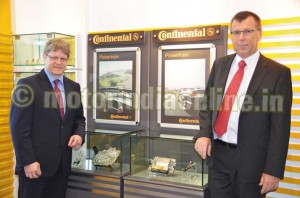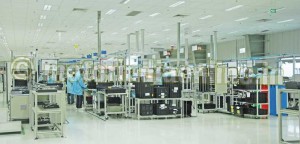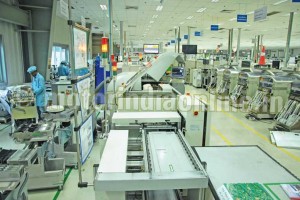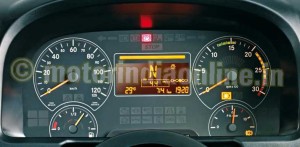A perfect match of global expertise & complete grasp of local needs
Continental is among the leading automotive suppliers of brake systems, systems and components for powertrains and chassis, instrumentation, infotainment solutions, vehicle electronics, tires and technical elastomers worldwide. Continental contributes to enhanced driving safety and global climate protection. It is also an expert partner in networked automobile communication.
instrumentation, infotainment solutions, vehicle electronics, tires and technical elastomers worldwide. Continental contributes to enhanced driving safety and global climate protection. It is also an expert partner in networked automobile communication.
The company has decades of experience with electronic systems for commercial vehicles and has intimate knowledge of the requirements of end consumers.
Continental’s presence in the Indian market goes back to the 1950s, before its acquisition of VDO. The company has been a key contributor to the growth of vehicle electronics in the country ever since. We had the opportunity to make an exclusive visit to the company’s facility in Bangalore, which operates as per Continental’s world-class standards, followed by an interaction with Dr. Christian Neumann, Head – Business Unit, Commercial Vehicles & Aftermarket India (CVAM), and Mr. Joerg Laatsch, Vice President, Engine Systems India – Asean, Continental Automotive Components (India) Pvt. Ltd., who spoke about the progress in India.
Continental’s CVAM Business Unit accommodates the specific requirements of the commercial vehicle, special vehicle and aftermarket segments. With more than 80 years of experience in the CV segment, the unit develops products that make commercial and special vehicles safer, cleaner, and more fuel-efficient.
Continental is also a market and technology leader for various segments and products categories such as tachographs.
 The company is making its know-how from the commercial vehicle and bus industry available to developing markets globally, offering its system solutions to manufacturers of the construction, agricultural, two-wheeler, leisure vehicle and marine sectors. The company leverages synergies from all areas of the group and offers a one-stop shop for the entire value chain: from development and prototype construction, CAD development and extensive testing to just-in-time delivery. Continental’s production operations are very flexible and can handle the whole gamut from small series to large orders with all its products also scalable thanks to the platform strategy the company pursues.
The company is making its know-how from the commercial vehicle and bus industry available to developing markets globally, offering its system solutions to manufacturers of the construction, agricultural, two-wheeler, leisure vehicle and marine sectors. The company leverages synergies from all areas of the group and offers a one-stop shop for the entire value chain: from development and prototype construction, CAD development and extensive testing to just-in-time delivery. Continental’s production operations are very flexible and can handle the whole gamut from small series to large orders with all its products also scalable thanks to the platform strategy the company pursues.
With greater importance attached to economic aspects and cost efficiency in developing markets like India, vehicle running costs must  be as low as possible, for which high-quality systems and components are vital. “India is a strategic emerging market for Continental in the vehicle electronics segment. With the introduction of more vehicle electronics on India commercial vehicles, motorcycles and off-highway vehicles, including tractors and construction equipment, we expect the market to grow and mature further in the coming years”, says Dr. Neumann.
be as low as possible, for which high-quality systems and components are vital. “India is a strategic emerging market for Continental in the vehicle electronics segment. With the introduction of more vehicle electronics on India commercial vehicles, motorcycles and off-highway vehicles, including tractors and construction equipment, we expect the market to grow and mature further in the coming years”, says Dr. Neumann.
Localization drive
Continental is localizing the entire value chains starting from localizing marketing to R&D to design, according to local customers’ requirements. The company is localizing sourcing for optimized cost, which refers to local suppliers and mainly applies for raw materials and components and localizing manufacturing for quick response to the market. “We are committed to working closely with OEMs to localize our products and deploy our team to the customers’ location as necessary. Product development, design and manufacturing of both software and hardware are all led out of India for commercial vehicle projects in the country. Recently, we announced the manufacture of fuel pumps in India, further pushing our localization drive in the country”, he adds. Continental works with leading vehicle manufacturers including Daimler, Ashok Leyland, Hyundai, Tata Motors and M&M, among others.
While still at a nascent stage compared to developed markets such as Europe, the uptake of electronics will be driven by factors like safety, comfort and connectivity and networking in the Indian market. “In India, the whole topic of vehicle electronics started nearly a decade ago when the domestic vehicle OEMs started looking for sophisticated electronic systems, not only with the electronic clusters, but also electrical network architecture with body controls and multiplex systems which help get rid of the wiring harness and uses just one electronic box each in the front and the rear with a CAN connector in between. We do expect the quantum of electronics in commercial vehicles grow in the coming years. It will happen, slowly but surely”, observes Dr. Neumann.
Target BS-IV
 When it comes to electronics and other advanced technology solutions, including Continental’s engine systems, the emission regulations play a vital role in bringing about an upgradation in the market. Though, at present, all the truck manufacturers in the country are ready with BSIV vehicles, it is the market demand which poses the main roadblock. Continental’s BS IV systems and solutions are already fitted on some trucks running on Indian roads, but since BS
When it comes to electronics and other advanced technology solutions, including Continental’s engine systems, the emission regulations play a vital role in bringing about an upgradation in the market. Though, at present, all the truck manufacturers in the country are ready with BSIV vehicles, it is the market demand which poses the main roadblock. Continental’s BS IV systems and solutions are already fitted on some trucks running on Indian roads, but since BS
IV is not the norm in most parts of the country, there is a long way to go for electronics in trucks.
In the bus segment, the first JnNurm scheme helped Continental deliver a good number of electronic systems to leading bus makers in the country. The imminent second scheme holds good promise for it as well, since electronics solutions such as CAN systems come under the standard JnNurm specifications. Mr. Laatsch says, “On the Engine Systems side, Continental is currently in the transition phase from EUIII to EUIV and focusing more on localization concepts and local support but we are confident that our time will come very soon.”
Continental’s engine systems provide additional functionality to the vehicles. This results in improved fuel economy and reduced emissions, apart from offering a number of safety-related functionalities. With transportation costs going up fast,
Indian transporters also face heavy maintenance and additional costs which erode his profit margins significantly. Conti’s electronics systems, working in sync with its instrument clusters, give a number of critical indicators to the driver. This helps reduce his maintenance costs and thereby indirectly boost his profitability.
Though proven globally and modified to suit the local requirements, Conti’s range of engine systems and solutions will have to wait for the market dynamics to change in India. Says Mr. Laatsch: “Our systems are optional fitments in BS
III vehicles, but when we have the BS IV regulations, they become essential and mandated as per law. So, for now, we are waiting for the market to go to the next emission level when our electronic solutions will have a larger role to play. For now, we are in a transition phase and are focusing more on localization, but our time will come very soon.”
Aftermarket business
On the aftermarket side, Continental has very strong presence in overseas markets, while in India it is currently working on a suitable strategy to tackle the challenges inherent in the market, such as the high cost-competitiveness, apart from many others. As it charts out its plans for the aftermarket segment as a whole, vehicle diagnosis is one area the company has started working on in a big way. In 2012, Continental had acquired Omitec, a UK company, which has given it a boost in the diagnosis segment, which it considers as one of its key focus areas for the coming years.
Conti also develops a host of networking/connectivity technologies such as digital tachograph, customized telematics modules, exterior light control unit, tire guard, tire information system, intelligent antenna modules and the AutoLinQ platform, all of which make fleet management more efficient. The company is in talks with many vehicle manufacturers and large fleet operators regarding its telematic solutions along with other offerings to enhance fleet management.
“Though legislation and enforcement would bring about the change quicker, it is important for the end customer to understand the advantages of moving over to BS IV vehicles with technologically-advanced systems. In India, most fleet owners focus on the initial investment on the vehicle rather than the total cost of ownership. In a few years, however, the customers will realize that technology such as electronics, engine systems and telematics are essential and will help him bring down his overall costs”, adds Mr. Laatsch.